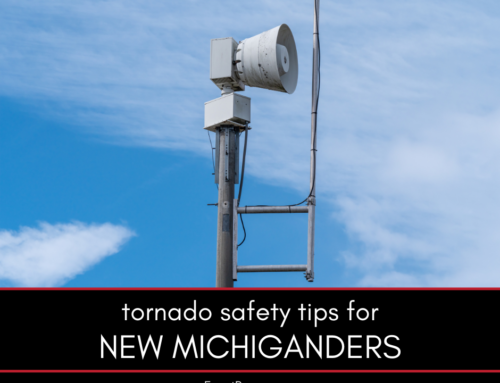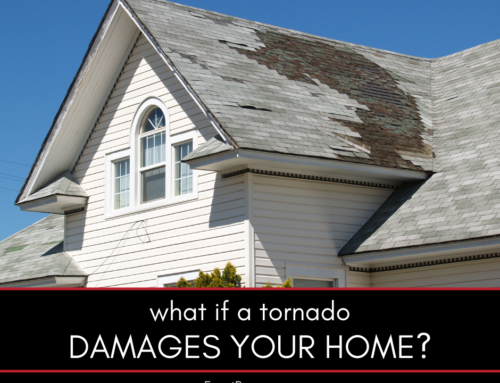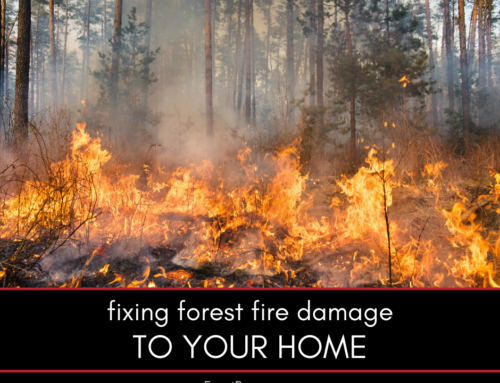If your home was built before the 1980s, there’s a chance it may contain asbestos, a hazardous material once commonly used in construction. Asbestos was valued for its heat resistance and durability but is now known to pose serious health risks. This guide explains what you need to know about asbestos in older homes and how to handle it safely.
What to Know About Asbestos in Older Homes
Understanding asbestos is essential for homeowners, especially if you live in an older house. This guide covers:
- What asbestos is and where it’s found in older homes
- Why asbestos is dangerous
- How to identify asbestos in your home
- What to do if you suspect asbestos
- When to call Exact Recon for remediation
Here’s a closer look at each.
What Asbestos Is and Where It’s Found in Older Homes
Asbestos is a naturally occurring mineral that was extensively used in construction materials throughout much of the 20th century. Known for its heat resistance, strength, and insulating properties, it was a common choice for homes built before the 1980s. However, the same durability that made asbestos popular also makes it dangerous when disturbed, as it releases microscopic fibers into the air.
In older homes, asbestos can be found in several areas. Insulation was one of its most frequent applications, particularly around pipes, boilers, and attics. Vinyl flooring and the adhesives used to secure tiles often contained asbestos, and roofing materials like shingles and tar paper were no exception. Asbestos was also present in textured wall paints, patching compounds, and ceiling materials, such as popcorn ceilings and acoustic tiles. Even HVAC systems were not immune, with asbestos commonly used in duct insulation and gaskets.
Although asbestos is not inherently dangerous when intact and undisturbed, damage or wear over time can cause it to break down, releasing harmful fibers into the air. This makes identifying and properly managing asbestos crucial in older homes, especially during renovations or repairs.
Why Asbestos Is Dangerous
Asbestos becomes hazardous when its fibers are released into the air and inhaled. These microscopic fibers can become lodged in the lungs, leading to severe and often life-threatening health conditions over time. The risks are compounded by the fact that asbestos-related illnesses typically take years or even decades to manifest.
One of the most common diseases caused by asbestos exposure is asbestosis, a chronic lung condition characterized by scarring of the lung tissue, which can result in breathing difficulties and reduced lung function. Asbestos exposure is also a significant risk factor for lung cancer, especially among individuals who smoke. Another particularly aggressive and fatal disease linked to asbestos is mesothelioma, a cancer that affects the lining of the lungs, chest, or abdomen.
Even brief exposure to airborne asbestos fibers can be dangerous, which is why it is critical to handle asbestos with extreme care. Professional assessment and remediation are the safest ways to address asbestos concerns in older homes.
How to Identify Asbestos in Your Home
Identifying asbestos in your home can be challenging, as it often looks similar to other building materials. For example, asbestos-containing ceiling tiles, flooring, or insulation may appear identical to their non-asbestos counterparts. The only definitive way to confirm the presence of asbestos is through professional inspection and laboratory testing.
Certified asbestos inspectors are trained to take samples of suspected materials without releasing fibers into the air. These samples are then analyzed in a lab to determine whether they contain asbestos. It is important to avoid attempting to collect samples yourself, as even minor disturbances can release hazardous fibers into the air, putting you and your family at risk.
If you suspect the presence of asbestos in your home—particularly in areas like attics, basements, or behind walls—it is essential to leave the materials undisturbed. Instead, consult with a professional who can conduct a thorough assessment and guide you on the safest course of action.
Do You Need a Disaster Remediation Expert in Washtenaw County or Jackson County?
If your home has already been damaged, we can help. Check out our services and get a free disaster remediation quote today. We offer:
- Water damage restoration
- Fire damage restoration
- Mold removal and remediation
- Fire and smoke restoration
- Sewer cleanup and disinfecting
- Reconstruction
- Wind and storm damage repair










